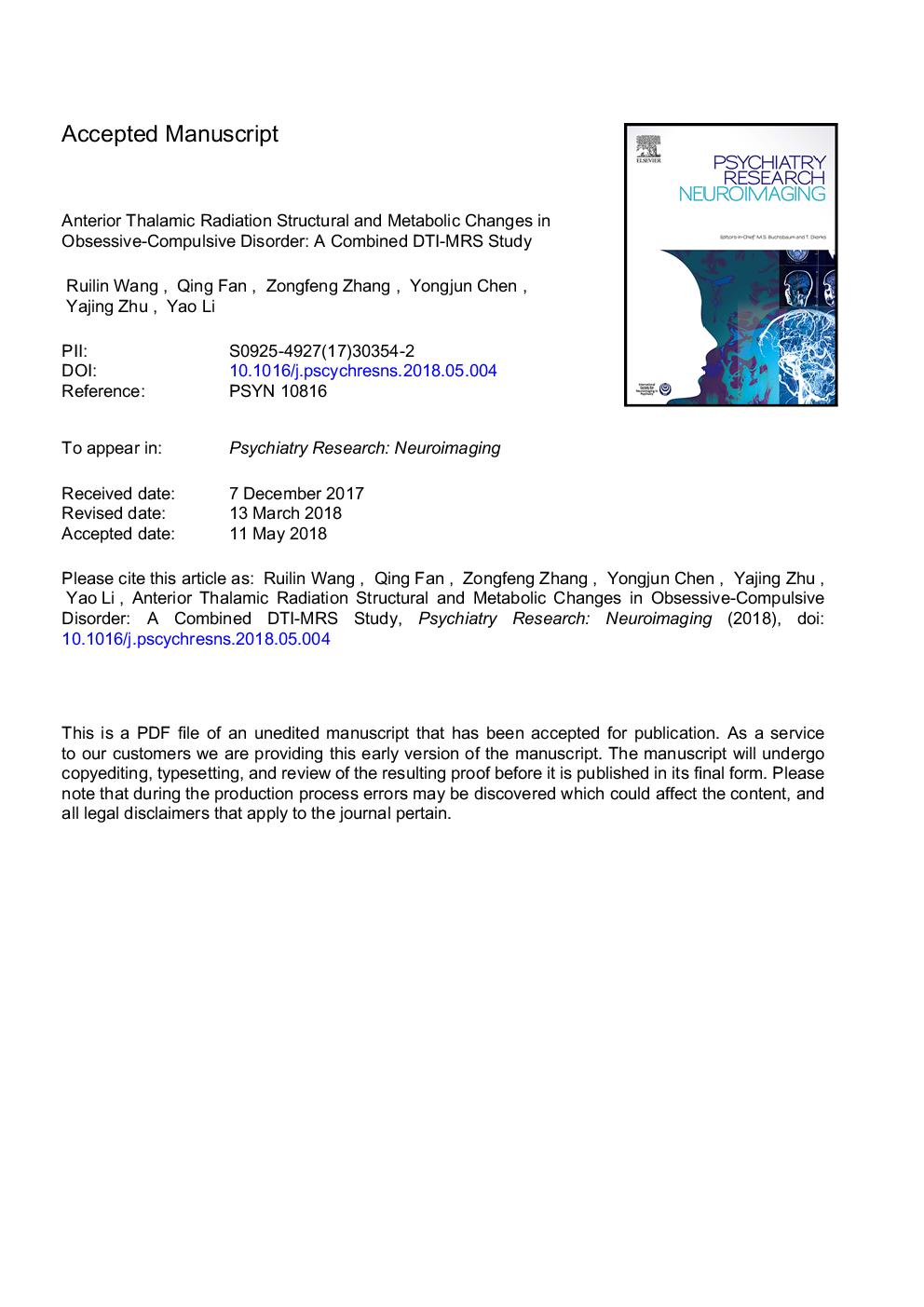| Article ID | Journal | Published Year | Pages | File Type |
|---|---|---|---|---|
| 6816702 | Psychiatry Research: Neuroimaging | 2018 | 20 Pages |
Abstract
Numerous studies indicate the cortico-striato-thalamo-cortical (CSTC) circuit plays an important role in the pathophysiology of obsessive-compulsive disorder (OCD). The anterior thalamic radiation (ATR), as a major fiber in the fronto-thalamic circuitry, contributes to symptomology of OCD. However, the underlying biochemical mechanism in relation with its structural alteration remains not understood. This study investigated the structural abnormality of ATR and its correlation with thalamic metabolic alteration in OCD, using diffusion tensor image (DTI) and proton magnetic resonance spectroscopy (1H-MRS). Twenty-six unmedicated adult OCD patients and twenty-six matched healthy controls participated in DTI study. Thirteen OCD patients and thirteen healthy controls, a subset of DTI participants, took part in MRS study. The results showed that mean fiber length of right ATR negatively correlated with ipsilateral thalamic choline (Cho) level in OCD patients. Additionally, significantly higher Cho concentration was detected in right thalamus of OCD patients compared to healthy controls. Moreover, the mean fractional anisotropy (FA) value of right ATR positively correlated with patients Yale-Brown Obsessive Compulsive Scale (YBOCS) total score, as well as YBOCS compulsion score. These results suggested the coupling of structural and metabolic changes in right ATR, which might serve as a multi-modal biomarker contributing to the pathogenesis of OCD.
Keywords
Related Topics
Life Sciences
Neuroscience
Biological Psychiatry
Authors
Ruilin Wang, Qing Fan, Zongfeng Zhang, Yongjun Chen, Yajing Zhu, Yao Li,
